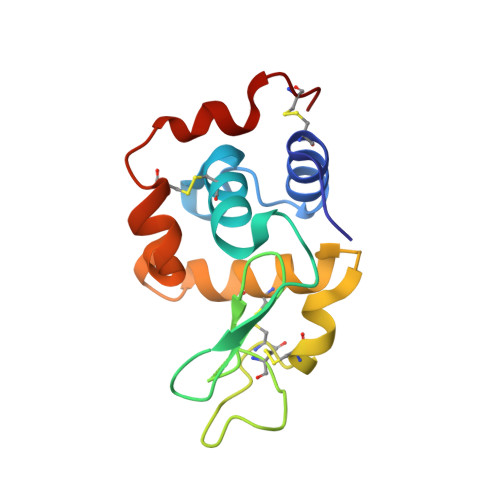Transition Metal-Free Tryptophan-Selective Bioconjugation of Proteins
Seki, Y., Ishiyama, T., Sasaki, D., Abe, J., Sohma, Y., Oisaki, K., Kanai, M.(2016) J Am Chem Soc 138: 10798-10801
- PubMed: 27534812
- DOI: https://doi.org/10.1021/jacs.6b06692
- Primary Citation of Related Structures:
5B59 - PubMed Abstract:
Chemical modifications of native proteins can facilitate production of supernatural protein functions that are not easily accessible by complementary methods relying on genetic manipulations. However, accomplishing precise control over selectivity while maintaining structural integrity and homogeneity still represents a formidable challenge. Herein, we report a transition metal-free method for tryptophan-selective bioconjugation of proteins that is based on an organoradical and operates under ambient conditions. This method exhibits low levels of cross-reactivity and leaves higher-order structures of the protein and various functional groups therein unaffected. The strategy to target less abundant amino acids contributes to the formation of structurally homogeneous conjugates, which may even be suitable for protein crystallography. The absence of toxic metals and biochemically incompatible conditions allows a rapid functional modulation of native proteins such as antibodies and pathogenic aggregative proteins, and this method may thus easily find therapeutic applications.
Organizational Affiliation:
Graduate School of Pharmaceutical Sciences, The University of Tokyo , 7-3-1 Hongo, Bunkyo-ku, Tokyo 113-0033, Japan.















